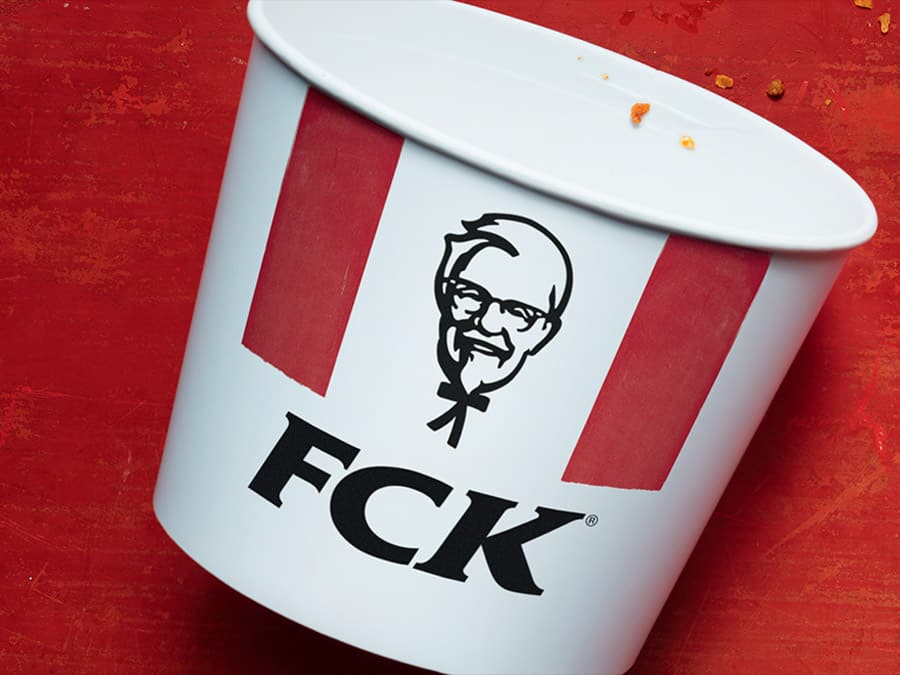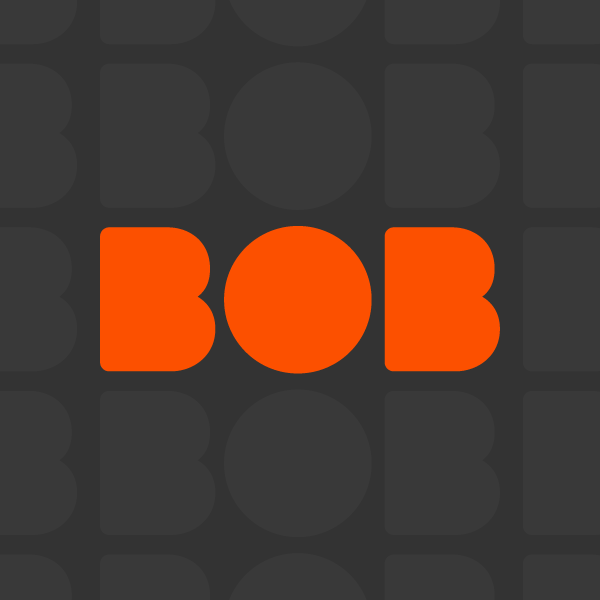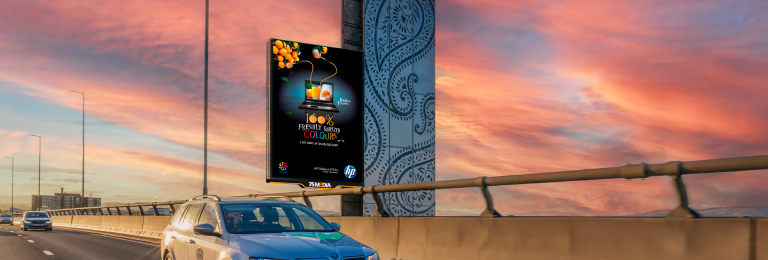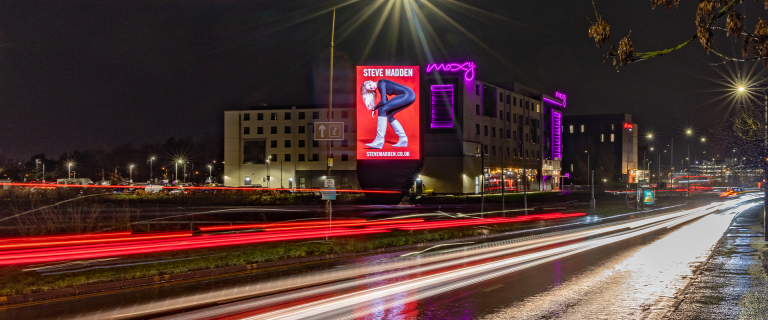It’s estimated that the global ad market grew by an impressive 15.6% through 2021, with this driven largely by digital marketing channels. In fact, digital advertising will account for more than 60% of the total spend in 2022, rising incrementally and encouraging brands to invest more across a broad range of markets.
Historically, of course, the global ad market has provided us with some incredible campaigns across a range of integrated channels. We’ve outlined some of the best and most memorable below, starting with an ad that was underpinned by a truly iconic tagline!
Hoover – It Beats…As it Sweeps…As it Cleans (1956)
Hoover’s iconic tagline (‘It Beats…As it Sweeps…As it Cleans’) made its debut in a print campaign in 1919, with this breaking down the brand’s unique technology and use of vibrating beater bars to create ‘positive agitation’ and provide more effective suction.
Catchy, simple and purposeful in equal measure, the tagline also featured in a black-and-while TV advert in 1956, featuring a young married couple as the graphic of a house appears around them.
The combination of upbeat music and a voiceover then introduces a cartoon graphic that breaks down the Hoover’s functionality in more detail, highlighting the importance of breaking relatively complex features and introducing these as consumer-centric benefits through accessible ad channels.
De Beers – A Diamond is Forever (1947)
On the topic of campaigns that are underpinned by incredible taglines, De Beers’ 1947 effort followed a concerted decline in the sale of diamonds in the wake of the Great Depression.
The iconic text ‘A Diamond is Forever’ was penned by copywriter Frances Gerety at the NW Ayer agency in Philadelphia, while it quickly became the foundation for an extensive print media campaign on behalf of De Beers.

More than 70 years later, this simple but memorable four-word sentiment remains one of the most recognisable brand slogans of all-time, while a 2013 feature in the New York Times revealed that it had appeared in every De Beers engagement message since 1948.
US Military – I Want You (1916)
Next up is a similar iconic, but highly controversial, military campaign and one that sought to recruit citizens for the US forces during World War I.
In a striking print ad, ‘Uncle Sam’ points an imposing and accusing finger at viewers, reinforcing the idea that eligible citizens had a moral responsibility to join the forces and commit to the international war effort.
Similar to the UK campaign that featured a striking image of Lord Kitchener and the text ‘Wants You’, such ads highlight the global conscription drive and were highly inspiring and influential in encouraging citizens across a broad range of demographics to join in the war effort.
Volkswagen – Think Small (1959)
Penned by Julian Koenig at the Doyle Dane Bernback (DDB) agency in 1959, the ‘Think Small’ campaign conducted on behalf of Volkswagen is widely considered to be one of the most effective (and memorable) in history.

Marketing the brand’s iconic ‘Beetle’ car, the campaign has been ranked as the best ad campaign of the 20th century by Ad Age, while it perfectly embodies the importance of simplistic messaging and eye-catching imagery.
The campaign focused primarily on the Beetle’s form, which was considerably smaller than most cars being sold at the time. This turned a potential disadvantage into a unique selling point, while creating an ad that truly stood out in a market synonymous with luxury and space.
Google – Year in Search (2017)
Back in 2017, Google released a two-minute video aimed at providing an insightful annual recap of the year’s top searches. Most interestingly, it featured prominent questions of how, creating quite inspirational footage that proved to be a highly effective and insightful marketing gimmick for the search engine giant.
From queries that asked how to help those affected by natural disasters (this was the year of Hurricane Harvey, Hurricane Irma and Hurricane Maria which cost a cumulative total in excess of $240 billion) to providing assistance to local communities, Google provided a myriad of answers while reinforcing its increasingly seminal role in the modern age.
Ultimately, Google’s annual ‘Year in Search’ closely analyses Google Trends data to uncover “what the world was searching for”, with the 2017 iteration providing a fascinating and at times poignant insight into the relationship between Google and its users.
Nike – Just Do It (1988)
Back in 1987, sports brand Nike hired the marketing agency Wieden + Kennedy to develop its first major television campaign, which featured a broad selection of commercials for running, walking, cross-training, basketball and women’s fitness.
However, each spot was conceived and developed by a different creative team, creating disparate and disjointed campaigns that did the brand little justice.
So, the night before the ads were first run, agency founder Dan Wieden decided that a unifying tagline was required to create a more holistic campaign that could drive brand recognition. So, ‘Just Do It’ was born, with this simplistic but impactful and active slogan introducing an emotional hook to help engage potential customers.
Incredibly, the slogan has also evolved to become one of the most iconic in history, while Nike continues to use it extensively to this day.
Dos Equis – The Most Interesting Man in the World (2006)
And now for one of the world’s most unusual ad campaigns, which saw beer brand Dos Equis build a series of character-driven commercials built around ‘the most interesting man in the world’.
This central character was portrayed by US actor Jonathan Goldsmith, with Frontline narrator Will Lyman providing voiceovers.
Conceived and produced by continental marketing firm Euro RSCG, the content and voiceovers delivered a mix of humour and outrageousness, creating a sense of unpredictability and excitement that helped the campaign achieve viral recognition online.
Coinciding with the birth and popularisation of social media, various ads became viral Internet memes through the noughties, while helping to drive brand awareness among a completely new demographic of consumers.
Pepsi- Is Pepsi OK? (2019)
If you’ve ever ordered a coke or diet soda at a restaurant, you’ll have no doubt been asked “is Pepsi OK?”. This has become something of a trope over time, with Pepsi keen to leverage this and flip the concept as part of a lavish 2019 ad campaign.
Featuring Academy Award-nominated actor Steve Carell, Grammy-nominated artist Cardi B and the legendary Lil Jon, the campaign playfully tackles the question head-on, reaffirming that Pepsi is more than OK and one of the most refreshing and delicious soda brands on the market.
While few brands have the profile or resources of Pepsi, this clever and creative campaign highlights the importance of understanding customers and their various experiences of your products and leveraging these to positive effect.
Apple – Get a Mac (2006)
The Apple brand has always been synonymous with classic simplicity, from its clean and sleek products to the now iconic brand.
Such values also underpinned Apple’s renowned ‘Get a Mac’ campaign in 2006, which successfully marketed the brand’s flagship laptop as being a preferable and more contemporary alternative to the classic Windows PC.
Set against a white backdrop, the ad features two men, one of whom is casually dressed and introduces himself as ‘Mac’. The other character is more formally dressed and relatively buttoned-down, while he describes himself as being a PC.
The ads feature various scenarios that highlight the superiority and enhanced functionality of the Mac, while cleverly associating PC and Windows users with the unpopular ‘nerd’ cliche.
By simultaneously presenting the Apple Mac as an improved and cooler option, the ads achieved huge success and superbly clarified the brand’s preferred, premium position in the marketplace.
KFC – ‘FCK’ (2018)
Some of the very best marketing campaigns throughout history have sought to create an opportunity out of crisis, with KFC’s opportunistic ‘FCK’ campaign in 2018 providing an excellent example.
After terminating its relationship with food-delivery specialist Bidvest Logistics in favour of an agreement with Quick Service Logistics and Deutsche Post-owned DHL in October 2017, the KFC brand was hoping to create a more reliable and intuitive supply chain.
DHL initially struggled to fulfil the demanding just-in-time order culture from a single operations centre, however, to the extent that ‘#ChickenCrisis’ was trending by February 2018.

The response from KFC was inspired, however, as they created an apologetic and reactive ad campaign that rearranged the letters of the brand name to ‘FCK’ and presented these on a chicken bucket.
Both opportunistic and highly effective, this genius example of crisis marketing translated into a significant brand breakthrough, while reinforcing the importance of identifying opportunities during challenging times.
Coca-Cola – Share a Coke (2011)
In the social media age, the most successful brands tend to be underpinned by a loyal and motivated consumer base.
This is something that definitely inspired Coca-Cola’s 2011 ‘Share a Coke’ campaign, which initially launched in Australia before being adopted and tweaked in a host of countries across the globe.
This simple but targeted campaign was focused around an adaptation of the classic Coca-Cola bottle, with the traditional wrapping amended to read ‘Share a Coke with….’. The space next to this text then featured one of the 150 most popular names in Australia, with the content printed onto millions of bottles down under and then throughout the world.
Rather than promoting the brand itself, the campaign was focused on deepening Coca-Cola’s relationship with its customers underpinning a far greater sense of consumer loyalty.
It also created an opportunity for increased engagement and user-generated content, as customers were encouraged to share the various moments that they enjoyed over a coke!
Red Bull – Stratos (2012)
While the viewership figures for the annual Super Bowl event may have dwindled slightly of late, a global audience of around 150 million still tuned in to see American Football’s showpiece finale in 2020.
Of course, advertising at the event is a significant honour, and Red Bull certainly made the most of the opportunity to wow a large captive audience with its exceptional ‘Stratos’ campaign in 2012.
The story behind Stratos is a fascinating one, with this the name given to a record-breaking, high altitude skydiving product involving Austrian skydiver Felix Baumgartner.
At the third attempt and before a global live audience, Baumgartner completed Red Bull’s Stratos mission on October 14th, 2012, ascending to a height of 24.5 miles (39km) in a stratospheric balloon. He then successfully completed his descent at a top speed of 834.5mph (1,342.8kph), capturing his journey on a GoPro camera that provided the material for the brand’s ad campaign.
Attention-grabbing and highly engaging in equal measure, this spectacular and truly unique campaign took experiential marketing to a whole new level and raised significant awareness for the global brand.
Procter & Gamble – Thank You, Mom (2012)
Sometimes, marketing can be used to change or alter the perception of a brand, especially large conglomerates or corporations that struggle to create or retain the trust of customers.
Take Procter & Gamble, for example, which is a multinational consumer goods corporation that’s involved in a number of controversial markets such as pharmaceuticals.
In 2012, however, the brand launched its global ‘Thank You Mom’ campaign ahead of the London Olympics, with a view to connecting with potential customers and raising $5 million for Youth Sports (supporting more than 150 athletes in the process).
This philanthropic campaign features a number of Procter & Gamble’s leading brands (such as Pampers, Tide and Gillette), each of whom committed a portion of their sales and made significant donations to the cause.
Additionally, P&G also sought to assist thousands of Olympian moms experience the Olympics live, generating huge sentiment for the brand while completely altering its profile on the global stage.
Always – #LikeAGirl (2015)
Puberty, as everyone can attest, is a hugely challenging rite of passage.
The magnitude of this was embraced by Always as part of a successful 2015 ‘#LikeAGirl’ ad campaign, which went viral on various social media channels and flipped an outdated and arguably sexist insult on its head.
Targeting adolescent girls and their parents, the campaign focused on the benefits of doing things ‘like a girl’, creating a positive spin on puberty and the amazing opportunities that may lie ahead in the future. As a result, Always created a truly inspirational campaign, and yet another that was built on a simple but insightful hashtag.
Interestingly, a subsequent study found that 94% of customers agreed that Always’ #LikeAGirl campaign has encouraged girls to be more confident overall, strengthening the existing bonds between the brands and its consumers.
Metro Trains – Dumb Ways to Die (2012)
Like most ad campaigns from the previous decade or so, Metro Trains’ superb ‘Dumb Ways to Die’ effort went viral across social media channels and various sharing platforms in November 2012.
An Australian public ad campaign, the goal was to promote railway safety, incorporating interactive social channels alongside radio, print and out-of-home (OOH) media under the stewardship of the McCann advertising agency in Melbourne.
Ultimately, the aim of the campaign was to engage an audience that doesn’t really want to hear any kind of safety message, utilising supposedly dumb and creative ways of dying that creating a clear emotive hook for viewers.
The campaign ran over a period of weeks, with Metro Trains reporting that it contributed to an impressive 30% reduction in so-called “near miss” accidents (from 13.29 per million kilometres in January 2012 to just 9.17 per million kilometres the following year).
By leveraging humour to target a younger and less safety-conscious audience, the campaign was clearly highly successful, while it also managed to achieve its objectives without resorting to common shock tactics.
This has also become an iconic and fondly-remembered ad campaign in Australia, as it created a relatively novel way of conveying an incredibly serious public message.
The Last Word
So there you have it; 15 of the most iconic ad campaigns of all time and a fond look back at some of the most creative and memorable ads in history.
There are other honourable mentions too, of course, including the striking ‘Absolut Bottle’ campaign from 1980 and Levi’s fun guide to casual business wear back in 1992.
Regardless, these adverts serve as templates for modern brands to follow across a broad range of channels, with most described as integrated campaigns that leverage simple but iconic messaging while utilising emotive hooks to engage audiences.
These basic rules can apply even as technology evolves and social media becomes an increasingly prominent marketing tool, with this borne out by the longevity and enduring impact of slogans such as Nike’s ‘Just Do It’.





